 November 6, 2014 John E. Ross, KD8IDJ, Editor
| ||||||||
ARRL Website Will Be Unavailable on November 7 Starting at 2100 UTC The ARRL website is scheduled to be offline on Friday, November 7, starting at 2100 UTC. The length of the outage could run for several hours and possibly into Saturday, November 8. The ARRL IT Department will be performing maintenance and testing in the process of switching the site to a new server. A "Down for Maintenance" message will appear for the duration of the outage whenever someone attempts to access www.arrl.org. All e-mail functionality will remain online -- only the website will be down for testing. ARRL Asks FCC to Continue Issuing Hard Copy Licenses to Those Who Want Them In comments filed November 5, the ARRL has recommended that the FCC continue to provide paper license documents to Amateur Radio licensees who want them. The League's remarks were in response to an FCC Public Notice (in WT Docket 14-161) that proposed to cease the routine issuance of hard-copy license documents to all Wireless Service licensees, including radio amateurs. While having a paper license document from the FCC to post on the wall of the ham shack has been a tradition, the Commission for several years has considered the "official" Amateur Radio license to be the virtual document residing in its Universal Licensing System (ULS) database.
Under the FCC-proposed process, once a license application is granted, the ULS will generate an official electronic license but will no longer mail a hard copy license unless notified that the licensee wishes to receive an official paper license document. Until new procedures are final, however, the Commission will continue to print and mail official paper licenses, unless notified to stop. "Should the Commission proceed with the Notice proposals," the League said in its comments, "it is ARRL's strong recommendation that the Commission give serious consideration to continuing a default provision for sending an initial paper license document to new licensees in the Amateur Radio Service, along with detailed, simple instructions for how to make the elections set forth in the notice relative to future modified or renewed licenses." The ARRL pointed out that not everyone has easy access to, or is comfortable using, the ULS and that Amateur Radio licensees may occasionally need an official license document -- for example, when applying for a license upgrade at a VEC exam session or for vehicle call sign license plates. "If there is not a license printed on distinctive license stock by the Commission, authentication issues arise and the possibility of electronic alteration of a license document is created," the League. The ARRL also suggested that requiring individuals to go online in order to obtain a license document may prove to be a roadblock to some applicants. "It is not acceptable to erect barriers to entry for anyone to obtain an Amateur Radio license or to modify a license," the League commented. "ARRL is concerned that there should be, especially for newcomers, an easy, intuitive path to make the election for license delivery method that does not involve ULS access at the outset."
The Notice also has proposed, alternatively, that the FCC send the official electronic license via e-mail upon grant of an application, if the applicant has provided a valid e-mail address on the application form. Licensees not wanting to provide an e-mail address could obtain an official electronic license document directly from the ULS. The Notice further proposes that licensees could notify the Commission that they wish to receive or continue receiving official authorizations on paper. The ULS License Manager online system now includes a setting that allows licensees to notify the FCC that they want to receive official licenses on paper. Licensees could change the default setting online, so that once an application has been granted, the FCC would mail an official paper license. The deadline to file comments is November 10. ARISS: Your Students Could Be Among the Next to Speak with the Space Station Crew via Ham Radio December 15 is the deadline for schools and educational institutions and organizations -- formal and informal -- to submit proposals to host an Amateur Radio contact with a member of the International Space Station crew. The Amateur Radio on the International Space Station (ARISS) program recently announced the opening of the application window. ARISS is especially interested in arranging contact events that will draw large numbers of participants and integrate the radio contact into a well-developed educational plan. Schools and educational organizations may apply individually or with other institutions or organizations. ARISS anticipates that the ham radio contacts between students and the space station will take place between May 1 and December 31, 2015.
By and large, at least one member of an ISS crew complement is licensed, and NASA makes Amateur Radio licensing available to ISS-bound astronauts. Contacts have a question-and-answer format and typically run up to 10 minutes. Crew scheduling and ISS orbits will determine the contact schedule. Educational organizations are encouraged to partner with a local Amateur Radio club or group to handle the technical aspects of the contact. Given the nature of human spaceflight and the complexity of scheduling activities aboard the ISS, organizations must demonstrate flexibility to accommodate changes in contact dates and times. ISS crew members have taken part in scheduled Amateur Radio contacts with students on Earth since December 2000. Amateur Radio organizations around the world; NASA; and space agencies in Russia, Canada, Japan, and Europe sponsor these educational opportunities by providing the equipment and operational support to enable direct communication between crew on the ISS and students around the world via Amateur Radio. The ARRL website has more information about the program, including details on expectations, audience, proposal guidelines and application form, as well as the dates and times of informational sessions. Contact ARISS with any questions or for additional information. Kansas Radio Amateur is ARRL McGan Silver Antenna Award Winner Brian Short, KC0BS, of Olathe, Kansas, is the recipient of the 2014 Philip J. McGan Silver Antenna Award. The award recognizes outstanding public relations efforts in promoting Amateur Radio to the non-ham community. Short, an ARRL Life Member, appeared on Kansas City Public Media's "Up To Date" interview program on KCUR-FM in November 2013. The show, "Exploring Ham Radio in a Digital World," highlighted Amateur Radio's value to the community and how individuals can get involved. An Amateur Radio instructor, he was the recipient of the 2009 Herb Brier Instructor of the Year Award. "Brian has done an outstanding job of using both traditional and social media to bring the message of Amateur Radio to the public," said ARRL Midwest Division Director Cliff Ahrens, K0CA. "He is very deserving of this recognition."
The product of an Amateur Radio family, Short has been licensed since 1987, when he was 18. He is an ARRL Midwest Division Assistant Director, serves as Johnson County Amateur Radio Emergency Service (ARES) Emergency Coordinator, and is a SKYWARN weather spotter. He is also president and frequency coordinator of the Kansas Amateur Repeater Council and president of the NEKSUN/K0HAM group. He has been a Public Information Officer in the Kansas City area. The ARRL Public Relations Committee recommended Short for the award, and the ARRL Board of Directors affirmed the committee's choice. As this year's McGan Award winner, Short will receive a plaque. The award's namesake, journalist Philip J. McGan, WA2MBQ (SK), served as the first chairman of the ARRL's Public Relations Committee. ARRL Introduces Kindle Edition of Ham Radio License Manual The ARRL has introduced a digital edition of The ARRL Ham Radio License Manual (3rd edition), its most popular introduction to Amateur Radio. The e-book includes everything a newcomer needs in order to prepare "As the leading publisher of Amateur Radio licensing and training materials, ARRL is expanding beyond traditionally printed books to meet the increasing demand from readers who prefer digital publications and online content," ARRL Marketing Manager Bob Inderbitzen, NQ1R, said. "Finding the next generation of radio amateurs requires meeting prospective hams where they are reading and consuming content." ARRL offers Kindle editions of its question-and-answer study guides, ARRL's Tech Q&A, ARRL's General Q&A, and ARRL's Extra Q&A. ARRL license manuals are also available directly from ARRL and many other ARRL publication dealers. W1AW Centennial Operations Shift to Rhode Island and Mississippi; American Samoa Operation Continues The ARRL Centennial W1AW portable operations taking place throughout 2014 from each of the 50 states are now in Kansas (W1AW/0) and Washington (W1AW/7). They will transition at 0000 UTC on Wednesday, November 12 (the evening of November 11 in US time zones), to Mississippi (W1AW/5) and Rhode Island (W1AW/1). W1AW/KH8 operations from American Samoa will continue until November 12. So far during 2014, W1AW has visited each of the 50 states for at least 1 week, and by year's end W1AW will have been on the air from every state at least twice.
Working W1AW/x from each state is worth 5 points per mode/contact, even when working the same state during its second week of activity. To earn the "Worked all States with W1AW Award," work W1AW operating portable from all 50 states. (Working W1AW or W100AW in Connecticut does not count for Connecticut. Participants must work W1AW/1 in Connecticut.) A W1AW WAS certificate and plaque will be available. An ARRL Centennial QSO Party leader board shows participants how many points they have accumulated in the Centennial QSO Party and in the W1AW WAS operations. Log in using your Logbook of The World (LoTW) user name and password, and your position will appear at the top of the leader boards. Results are updated daily, based on contacts entered into LoTW. Put On Your Radio Voice! The ARRL November Sweepstakes SSB is Just Ahead Operators in the US and Canada will exercise their vocal cords (or their digital voice memories) November 15-17 to compete in the 2014 ARRL November Sweepstakes SSB event. The action gets underway at 2100 UTC Saturday and runs through 0259 UTC Monday (Sunday evening in continental US time zones). Many operators hope to get a "Clean Sweep" by working stations in all 83 ARRL and Radio Amateurs of Canada (RAC) sections.
The exchange goes like this: Call sign of the station worked, consecutive serial number, starting with 001, a precedence -- a letter that indicates your operating category; see the rules), your call sign, a check -- the last two numerals of the year you were first licensed, and the two-letter abbreviation of your ARRL or RAC section (SEC). Many stations will use phonetics for clarity, since logging accuracy is paramount in any contest. For example, if W8EXK -- a Class A station in West Virginia -- works W1MSW as his 15th contact, it would sound something like this: "W1MSW, number 15, alpha, from whiskey eight echo x-ray kilowatt, check six-three, West Virginia." The log entry would look something like this: W1MSW 015 A W8EXK 63 WV. All popular logging programs include a template for ARRL November Sweepstakes. The 2014 ARRL November Sweepstakes Operating Guide contains a collection of Sweepstakes information and links to help both newbies and old timers to understand the rules, operating techniques, and log-submission guidelines. Be sure to read the rules for all ARRL contests too. Logs are due 15 days after the event is over. CW Sweepstakes submissions must be received by 0300 UTC Tuesday, November 18, 2014. SSB logs are due by 0300 UTC on Tuesday, December 2, 2014. ARRL still accepts paper logs, but electronic Cabrillo logs submitted via e-mail are preferable. Send paper logs to: ARRL November Sweepstakes, 225 Main St, Newington, CT 06111. WA7BNM's online Cabrillo converter lets the operator manually enter hand-logged data to create a Cabrillo file. Submitting logs electronically enhances the quality of the log-checking process and permits more rapid publication of results. Icom is the Principal Awards Sponsor for ARRL November Sweepstakes events. For more information about ARRL November Sweepstakes, contact ARRL Contest Branch Manager Matt Wilhelm, W1MSW. IARU Region 1 Approves Youth Working Group, Budget International Amateur Radio Union Region 1 (IARU R1) has established a Youth Working Group and appointed Region 1 Youth Coordinator Lisa Leenders, PA2LS, as Youth Working Group Chair for the next 3 years. The action came as delegates from IARU Region 1 countries (Europe, Africa, the Middle East, and Northern Asia) met September 21-26 in Bulgaria for the 23rd IARU Region 1 General Conference. The minutes of the Final Plenary are now available.
The Youth Working Group will organize and coordinate Youngsters On The Air (YOTA) program activities, including an annual special event. IARU Region 1 delegates also allocated 3-year budgets of $26,000 for youth projects and $2080 for the Youth Working Group. Leenders, who's 24, has been licensed since the age of 13. During December, stations in several Region 1 countries will be active with YOTA-suffix call signs. In other actions, delegates appointed a Region 1 Amateur Radio Observation Service Coordinator to establish independent AROS operations in about a half-dozen member societies "to commence the monitoring of DXpeditions for malicious QRM" and to work to identify "any patterns and possible sources of jamming." Mark Jones, G0MGX, was appointed as the AROS Coordinator. Read more. New DX Summit Website Now Beta Testing, Will Debut Formally by December 1 The DX Summit website will soon have a fresh new face and a more modern user interface. The well-known and popular portal for getting DX spots via the Internet, operated by Radio Arcala OH8X in Finland, will become "My DX Summit" -- MDXS for short -- when it formally goes live for the Amateur Radio community by December 1. Right now, though, hundreds of volunteers are beta testing the new website and offering suggestions and changes in advance of the changeover from the current site to the new one.
Laine said that since "no major challenges" have been encountered and the system is holding up well, Radio Arcala may make the site live sooner than anticipated. My DX Summit will display spots in HTML format as they are posted, so users will not have to wait for a new set of spots to reload every 60
seconds. The page has a clean and modern look and feel, and users can select filters in a check-off type menu. For example, users who don't want to see any VHF spots can check a box, or they can check which VHF bands they do wish to receive spots for. Receiving only CW, SSB, or digital mode spots is just a matter of clicking the appropriate boxes in the filter menu. Selected filters are listed on the top of the display. In short, the new site will let users customize the cluster postings to their particular preferences. Laine said the current DX Summit site is serving some 143,000 unique users each month. "With all these new features, we plan to double the number," he told ARRL. "What is amazing on our portal is that each user is spending an average of 55 minutes on the system. We will soon compete with their TV-watching time!" Read more. -- Thanks to Martti Laine, OH2BH American Legion Amateur Radio Club Plans On-Air Tribute to Veterans Amateur Radio operators who are members of the American Legion will honor the military services and their fellow veterans in a special on-the-air tribute on Veterans Day, Tuesday, November 11. Members of The American Legion Amateur Radio Club (TALARC) will be on the air as W9L from 1400 until 2100 UTC, from American Legion national headquarters in Indianapolis. Radio amateurs who contact the station or shortwave listeners who monitor it are eligible to receive an attractive full-color commemorative certificate.
Justis also cited the contributions of MARS (Military Auxiliary Radio System) members, who arranged phone-patches that allowed soldiers in war zones, at sea, and in other overseas locations to speak directly with their families back home, especially in the pre-Internet era of the Korean and Vietnam wars. While the Internet has changed things, Justis said, Amateur Radio still assists communities in many other ways, primarily in the event of emergencies and disasters. "Many of The American Legion Amateur Radio Club's 2000 members are committed to emergency preparedness as well as promoting the hobby, art and science of Amateur Radio to young and old alike," he said. Special event station W9L will be on 20 meters SSB, 14.275 MHz ±5 kHz, IRLP Node 4816, or in Central Indiana to 146.46 MHz simplex or the 145.17 MHz repeater in Hamilton County.To receive a certificate send a 9 × 12 self-addressed, stamped-envelop to The American Legion Amateur Radio Club, 700 N Pennsylvania St, Indianapolis, IN 46204. Tromelin Island DXpedition, FT4TA, Drawing a Crowd Pileups on the HF band are "still big and wide," according to the FT4TA DXpedition team on Tromelin Island in the Indian Ocean. Operators say they're doing their best to find "the best balance between rate and bandwidth usage" and that the sprawling and, many would say, unruly pileups are a result of the "thousands still calling." Over the November 1-2 weekend, DXers and ARRL November Sweepstakes CW participants competed for elbow room on the bands.
The FT4TA DXpedition has said its operation is a chance to get Tromelin Island off the Top 10 most-wanted lists. Right now, it's number 8 (mixed) on the ClubLog DXCC Most Wanted List. Operators at FT4TA report a lot of "unique" call signs in their log. "Keep your fingers crossed -- you'll make it!" they added. The DXpedition reports excellent propagation with several bands open at the same time for Japan, Europe, and North America. "We are trying to give the same chances to everyone," the team said, urging those attempting to snag FT4TA to respect their on-air instructions regarding which areas of the world they're focusing on. "Operators at FT4TA won't get you if they are not calling your area," they said. "We have been able to enjoy some short openings with the West Coast on [long path]," they said. "We will keep our efforts on low bands and try again to be on 160, 80, and 40 at our sunset," although 75 meter SSB operation was not in the team's plan "and we are not sure to try again as conditions on this band are not the best for SSB." The six-station operation has "found a good rhythm, working radio until falling asleep on the keyboard; eat, sleep, radio, repeat. Everyone is tired but over-motivated to satisfy the entire community." The FT4TA DXpedition has been uploading its logs to Logbook of The World (LoTW). FT4TA operation will continue until November 10 (UTC). The DXpedition is the recipient of an ARRL Colvin Award grant. South African 5 MHz Research Project Sees Unexpected Results A 5 MHz propagation research project in South Africa has encountered some unexpected results regarding near-vertical incidence skywave (NVIS) propagation on that band. The project is a joint venture between the South African Radio League (SARL) and the Kempton Park Amateur Radio Technical Society, where one 5 MHz beacon has been installed. An interesting, but tentative, finding was inconsistent NVIS propagation test results. NVIS takes advantage of skywave propagation for short-distance communication, especially on the lower end of the HF spectrum. An EE Publishers article described the preliminary test results.
The experimenters also observed that the band opens earlier and closes later heading into summer (winter in the Northern Hemisphere), "which indicates variations in the ionization of the D layer of the ionosphere as the sun rises earlier and sets later," the article said, noting, however, that not enough data have been collected to draw any meaningful conclusions. The project uses several automated beacons using WSPR (Weak Signal Propagation Reporter), which was developed by Joe Taylor, K1JT. The Independent Communications Authority of South Africa (ICASA) has awarded two licenses to the SARL to carry out 5 MHz propagation research in advance of World Radiocommunication Conference 2015 (WRC-15). Conference agenda item 1.4 would grant radio amateurs a secondary allocation within the band 5250 to 5450 kHz. Several countries, including the US, have allocated discrete channels to the Amateur Service on a secondary basis. Dominica Now Permits 60 Meter Operation Dominica (J7) is among the latest countries to allocate spectrum in the vicinity of 5 MHz to Amateur Radio. The Dominica National Telecommunications Regulator, NTRC, has granted hams on the Caribbean island the ability to operate on five 3 kHz-wide channels on the 60 meter band. Dial frequencies are 5330.5, 5346.5, 5355.5, 5371.5, and 5403.5 kHz at 50 W PEP on SSB only. The channels are only available to General and Advanced licensees in the Commonwealth of Dominica. With the exception of 5355.5, the channels are the same as those available to hams in the US. -- Thanks to Dominica NTRC The ITU Elects a New Secretary-General At the 19th International Telecommunication Union (ITU) Plenipotentiary Conference in Busan, South Korea, member states
confirmed candidates for the organization's five elected posts, as well as the 12 members of the Radio Regulations Board and the 48 Members of ITU Council, the administrative body that governs the ITU in between quadrennial plenipotentiary conferences. Houlin Zhao of China succeeded in his bid to become the next Secretary-General of the ITU, after serving for 8 years as Deputy Secretary-General. He will succeed Dr Hamadoun Touré, HB9EHT, on January 1, 2015. Malcolm Johnson of the United Kingdom was elected as the ITU's new Deputy Secretary-General. François Rancy of France was confirmed for a second term as the Director of ITU's Radiocommunication Bureau. -- Thanks to IARU Region 1 News Kentucky Historical Society Honors Former ARRL Director Former ARRL Great Lakes Division Director Gary Johnston, KI4LA, has been named as the recipient of the Kentucky Historical Society's 2014 Award of Distinction. Johnston chaired the ARRL Board of Directors Historical Committee during his tenure, which included stints as both a Vice Director and Director. Johnston is president of the Board of Trustees of the Behringer-Crawford Museum (BCM) in Covington, Kentucky, which also received a History Award. According
to an article in the Cincinnati Enquirer, the Award of Distinction goes to a volunteer, board member, or member of an organization who has made a significant contribution to state and local history during his or her career. "Since joining BCM's board of trustees in 2003, Johnston has had a significant impact on the museum and the communities it serves," the article said. "During thousands of volunteer hours, he redesigned and upgraded the museum's computer systems, chaired the committee that revamped its organizational structure, and helped secure more than $2.3 million in funding to complete the museum's major expansion which opened in 2007." Johnston also was credited with applying his technical and creative talents to enhance and promote the museum's exhibits and events. He currently chairs the museum's Capital Improvements Committee and has raised more than a quarter-million dollars for additional museum improvements. Read more. International Amateur Radio-Scouter Shelly Weil, K2BS, SK Sheldon "Shelly" Weil, K2BS (ex-W2GQN), of Delray Beach, Florida, died October 29, following complications resulting from serious injuries sustained in a fall. He was 81. Weil, an ARRL member, was legendary within Scouting's Amateur Radio community, and regularly attended National and World Jamborees, helping to staff the Amateur Radio station and sharing his affection for ham radio with the Scouts on hand.
"Shelly made an unforgettable impression on me at the 1973 Jamboree East," said ARRL CEO David Sumner, K1ZZ. "I may have had the title of KJ3BSA station manager, but it was Shelly's experience and remarkable scavenging ability that was the essential ingredient to the success of the ham radio tent." ARRL staff member and Scout leader Larry Wolfgang, WR1B, recalled how Weil would arrive at K2BSA during Scout Jamborees with a transceiver and amplifier in tow. "He would get on the air and make many contacts with his friends and acquaintances around the world, giving many Scouts an opportunity to get on the air," Wolfgang said. A Brooklyn, New York, native, Weil graduated from Brooklyn College with a degree in psychology. He was an Eagle Scout who subsequently was recognized with other Scouting honors and awards. He once served as chairman of the National Jewish Committee on Scouting. Weil also served the Anti-Defamation League as a regional board member. During a World Scout Jamboree in Japan several years ago, Weil took part in the rescue effort after a typhoon that occurred during the event. In those pre-Internet days, Weil was able to use Amateur Radio to let parents back home know that their youngsters were okay. The family has invited memorial contributions to the Anti-Defamation League or to Friends of Israel Scouts. -- Read more. A Century of Amateur Radio and the ARRL VHF/UHF scanners had become very common by the 1990s, and many local and state governments enacted laws making their use illegal. At the same time, several manufacturers of amateur VHF/UHF equipment started including scanners in their amateur transceivers, which provided reception outside the ham bands. This put some hams between a rock and a hard place. In the late 1980s, the ARRL launched an effort to have the FCC clarify its rules regarding scanners. Finally, on August 20, 1993, FCC published a Memorandum and Order to settle the issue. The Order stated that hams have a federal right to own and operate their equipment, which preempts state and local radio laws. Furthermore, the FCC's decision supported, at length, the very essence of the purpose of the Amateur Service. Once again, the League represented our interests and preserved our place in radio.
By 1995, the FCC had implemented electronic filing of license applications, greatly reducing the time lapse between passing a license exam and getting the license. The new system often reduced the waiting period to as little as 2 weeks. By the 1990s, digital signal processing (DSP) was coming into use in the form of both homebrewed and factory-made devices. "DSP -- An Intuitive Approach," by W9GR, in the February 1996 issue of QST explained how DSP works and urged hams to give it a try. -- Al Brogdon, W1AB The K7RA Solar Update Tad Cook, K7RA, Seattle, Washington, reports: Solar activity softened a bit this week. From October 30 through November 5, the average daily sunspot number was 95.7 -- down 24.2 points from the previous 7 days. Average daily solar flux declined from 198 to 127.9.
The predicted Planetary A Index is 8, 10, 8, 12, and 10 on November 6-10, then 8 on November 11-13, jumping to 12 on November 14-15, then 22, 15, and 10 on November 16-18, then 8 on November 19-21, and 12 on November 22-24. This weekly "Solar Update" in The ARRL Letter is a preview of the "Propagation Bulletin" issued each Friday. The latest bulletin and an archive of past propagation bulletins is on the ARRL website. In Friday's bulletin, look for an updated forecast and an update of our 3-month moving average of sunspot numbers. Send me your reports and observations. Just Ahead in Radiosport
See the ARRL Contest Calendar for more information. Upcoming ARRL Section, State, and Division Conventions and Events
Find conventions and hamfests in your area. ARRL -- Your One-Stop Resource for
Subscribe to...
Free of charge to ARRL members... | ||||||||
 "The FCC is willing to continue to mail paper licenses to those who request them," ARRL General Counsel Chris Imlay, W3KD, has explained. "However, they are making available to licensees -- starting right now -- the actual license to print via the FCC ULS, and it is allowing hams now to opt out of receiving paper licenses from the FCC directly." (See ULS menu below.)
"The FCC is willing to continue to mail paper licenses to those who request them," ARRL General Counsel Chris Imlay, W3KD, has explained. "However, they are making available to licensees -- starting right now -- the actual license to print via the FCC ULS, and it is allowing hams now to opt out of receiving paper licenses from the FCC directly." (See ULS menu below.)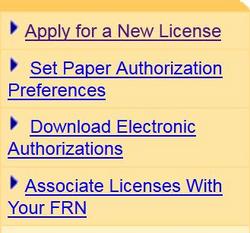
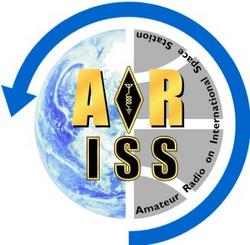 "ARISS provides an exciting outreach opportunity for the ham radio community to connect with local schools," ARRL Educational Services Manager Debra Johnson, K1DMJ, said. "A scheduled ARISS contact is a voice-only communication via Amateur Radio between the ISS crew and classrooms and communities. ARISS contacts allow education audiences to learn firsthand from astronauts what it is like to work and live in space."
"ARISS provides an exciting outreach opportunity for the ham radio community to connect with local schools," ARRL Educational Services Manager Debra Johnson, K1DMJ, said. "A scheduled ARISS contact is a voice-only communication via Amateur Radio between the ISS crew and classrooms and communities. ARISS contacts allow education audiences to learn firsthand from astronauts what it is like to work and live in space."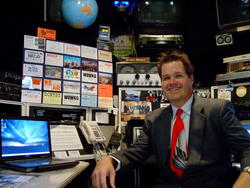
.jpg) for the Amateur Radio license exam. The
for the Amateur Radio license exam. The 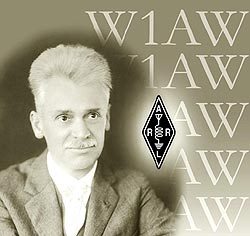 The
The 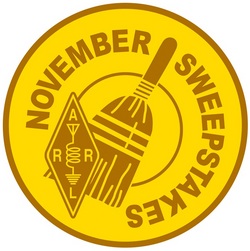 "A humongous station is not required to have a lot of fun in the Sweepstakes -- modest antennas and 100 W will do just fine," SS regular and ARRL Contributing Editor Ward Silver, N0AX, commented in the November 5
"A humongous station is not required to have a lot of fun in the Sweepstakes -- modest antennas and 100 W will do just fine," SS regular and ARRL Contributing Editor Ward Silver, N0AX, commented in the November 5 
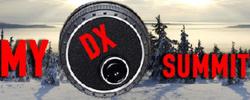 "We ended up having 700 testers and early check-ins," Radio Arcala's Martti Laine, OH2BH, told ARRL this week. "Their input was very valuable, and we will implement those urgent ones immediately and process those many new ideas for continuing development work."
"We ended up having 700 testers and early check-ins," Radio Arcala's Martti Laine, OH2BH, told ARRL this week. "Their input was very valuable, and we will implement those urgent ones immediately and process those many new ideas for continuing development work."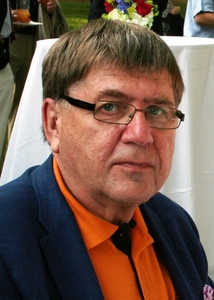
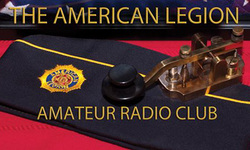 "Veterans Day is more than just a holiday. It is a time for all Americans to recognize the honorable nature of military service and the men and women who have sacrificed so much in defending our nation through the years," said TALARC President Marty Justis, W9WMJ. "This special event operation serves to underscore the importance of Veterans Day via the Amateur Radio community, to salute the men and women who have served our country honorably in uniform, and to recognize the contributions of so many military personnel."
"Veterans Day is more than just a holiday. It is a time for all Americans to recognize the honorable nature of military service and the men and women who have sacrificed so much in defending our nation through the years," said TALARC President Marty Justis, W9WMJ. "This special event operation serves to underscore the importance of Veterans Day via the Amateur Radio community, to salute the men and women who have served our country honorably in uniform, and to recognize the contributions of so many military personnel.".jpg) "We know many of you still need Tromelin for an all-time new one. So, narrowing pileups too much would not be good for you," a team update said this week. "Also, there is no band open where we can stay 'all day long.'" Operators have conceded that working the US or Oceania is not easy unless European stations stand by -- "and this is something quite difficult to achieve."
"We know many of you still need Tromelin for an all-time new one. So, narrowing pileups too much would not be good for you," a team update said this week. "Also, there is no band open where we can stay 'all day long.'" Operators have conceded that working the US or Oceania is not easy unless European stations stand by -- "and this is something quite difficult to achieve." "Comparing a communications path between two amateur stations, ZS6KN and ZS6KTS (distance of 51 km), it is interesting to note that in June 2014 there was a good communications path from just after [0500] till approximately 1630, after which the signals disappeared," the article recounted, noting that the pattern for July was the same, but signals were considerably stronger than during August and September.
"Comparing a communications path between two amateur stations, ZS6KN and ZS6KTS (distance of 51 km), it is interesting to note that in June 2014 there was a good communications path from just after [0500] till approximately 1630, after which the signals disappeared," the article recounted, noting that the pattern for July was the same, but signals were considerably stronger than during August and September..jpg)
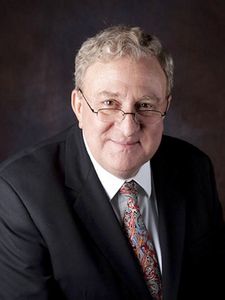
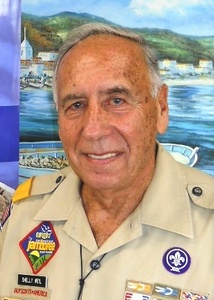
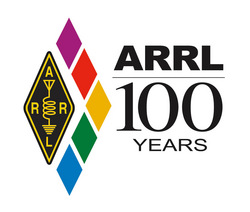 One of the Nobel Prizes awarded in 1993 went to Joe Taylor, K1JT, and Russell Hulse, ex-WB2LAV, for their discovery of binary pulsars and their investigation of the gravitational fields exerted by those ultra-dense stars. Joe credited his interest in Amateur Radio while still a teenager as leading to his chosen field of physics and to his Nobel Prize.
One of the Nobel Prizes awarded in 1993 went to Joe Taylor, K1JT, and Russell Hulse, ex-WB2LAV, for their discovery of binary pulsars and their investigation of the gravitational fields exerted by those ultra-dense stars. Joe credited his interest in Amateur Radio while still a teenager as leading to his chosen field of physics and to his Nobel Prize.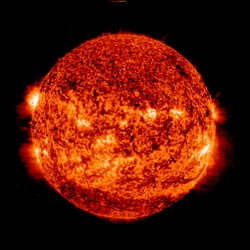 The latest forecast has solar flux at 135 on November 6-7, then 130, 135, and 140 on November 8-10, 145 on November 11-12, then 150, 160, and 170 on November 13-15. Solar flux will jump to 180 on November 16-17, 190 on November 18, and peak at 200 on November 19-20, before dropping below 100 after November 30 and reaching a low of 80 on December 5. Flux values then rise to 180 on December 16-17.
The latest forecast has solar flux at 135 on November 6-7, then 130, 135, and 140 on November 8-10, 145 on November 11-12, then 150, 160, and 170 on November 13-15. Solar flux will jump to 180 on November 16-17, 190 on November 18, and peak at 200 on November 19-20, before dropping below 100 after November 30 and reaching a low of 80 on December 5. Flux values then rise to 180 on December 16-17.







